Tibetan Saddle Rugs
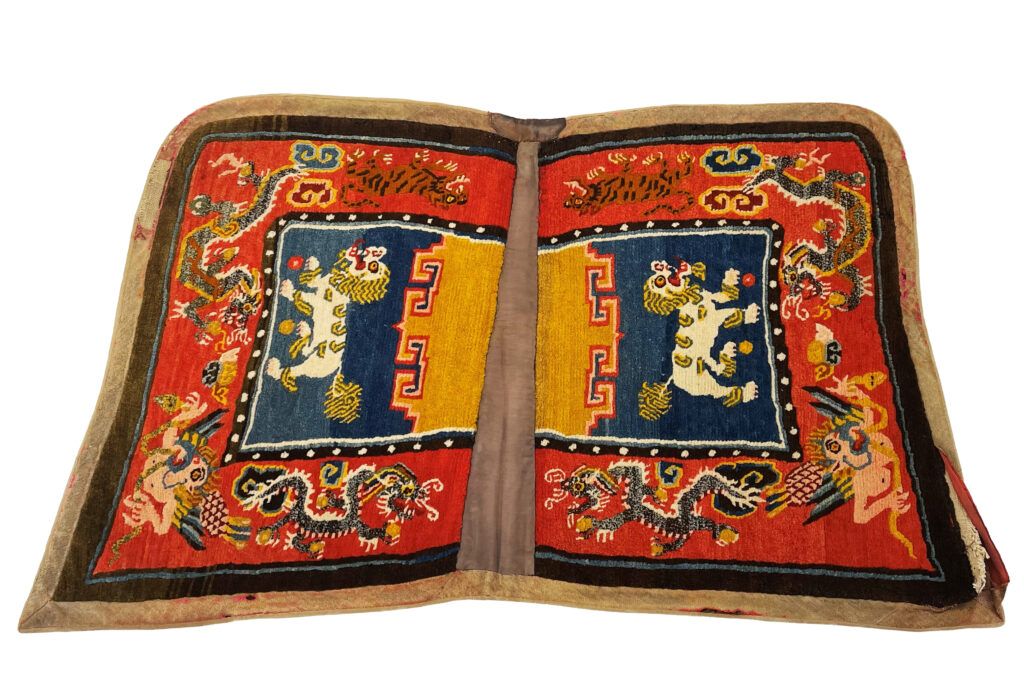
Saddle Rug
Tibet, 2011.04.E.01
The main decoration of this rug are dangerous creatures: dragons playing with pearls, tigers, lions, and bird-like Garudas fighting with snake-like Nagas.
Dragons are typically depicted playing with flaming, glowing, or flashing pearls. Dragon imagery is common on saddle rugs because the dragon represents wealth. Merchants may choose this kind of rug to win the dragon’s favor, hoping for good fortune in their business.
The humanoid figures at the edge of the saddle rug are the Garuda in anthropomorphic form. Garuda is the “Lord of Birds” in Hindu Buddhist tradition, but sometimes has a more sinister characterization in Tibetan Buddhism. The Naga are a type of intelligent and evil serpents, depicted here being devoured as the Garudas’ prey. Thus, the appearance of the Garuda often represents protection.
Two snow lions in the center of the rug are celestial animals that indicate power and fearlessness. Tigers are considered to have the extraordinary power to cast out demons and control evil. The combination of the dragons, Garudas, snow lions and tigers on the saddle conveys Tibetan people’s hope for being safe during transportation and having good fortune in their business.
Dragons appear both in the featured rug and this one
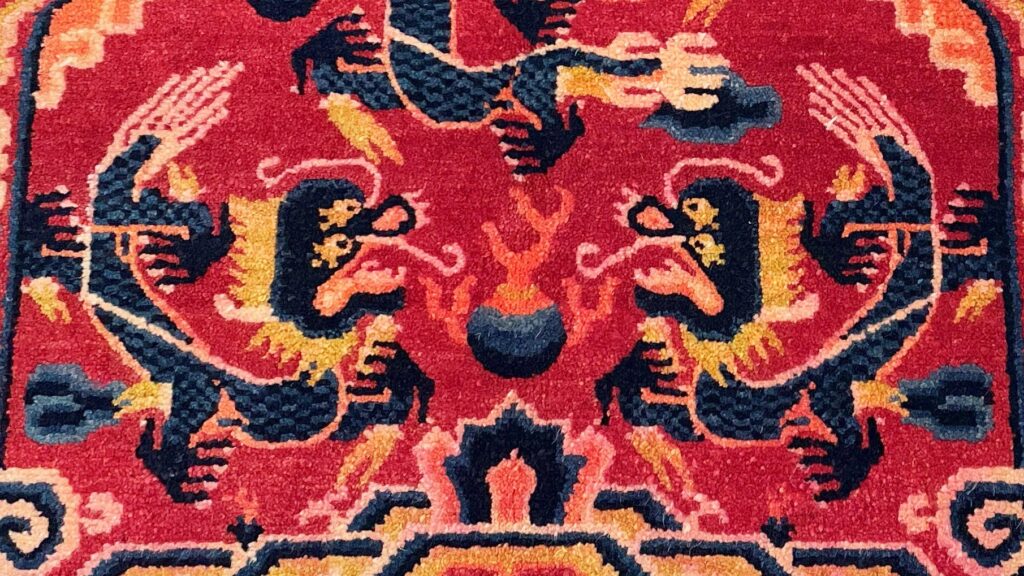

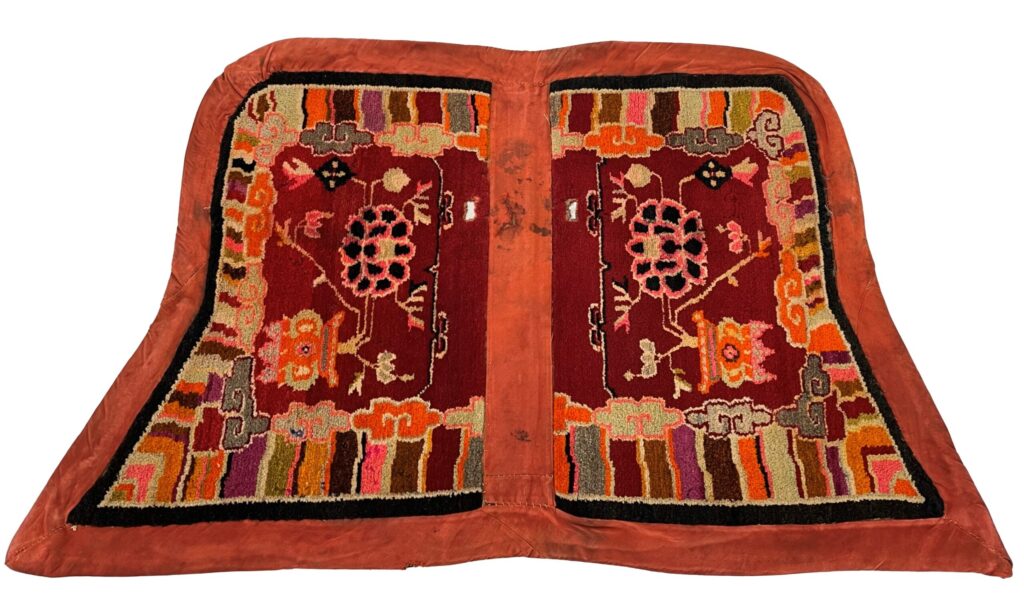
Saddle Rug
Tibet, 2011.04.E.10
Shades of red are used to depict a mirrored composition of lotus thrones and furnaces used in traditional Chinese alchemy. The borders of the design are embellished with a cloud band. Like alchemy, this symbol originated in China during the Han dynasty. It is a common symbol in textiles throughout East, Central, and South Asia. The cloud band represents the connection between the human world and heaven based on the essence of clouds flowing in the sky. Cultural variations on this form sometimes include additional elements such as leaves, ribbons, and vines.
Cloud bands appear in both the featured rug and this one.



Saddle Rug
Tibet, 2011.04.E.62
At the center of this wool mat, under the head of the dragon coiled within the red circle, is a flaming pearl. The flaming pearl represents the essence of dragons, as well as the sun and moon, and is a direct representation of wish-fulfilling gems from South Asian traditions. Dragons are often depicted chasing pearls, as part of a broader association between dragon motifs and high socioeconomic status. In addition to the dragons, four auspicious symbols are placed in the khaki-colored blocks on each side.
Flaming pearls appear in both the featured rug and this one


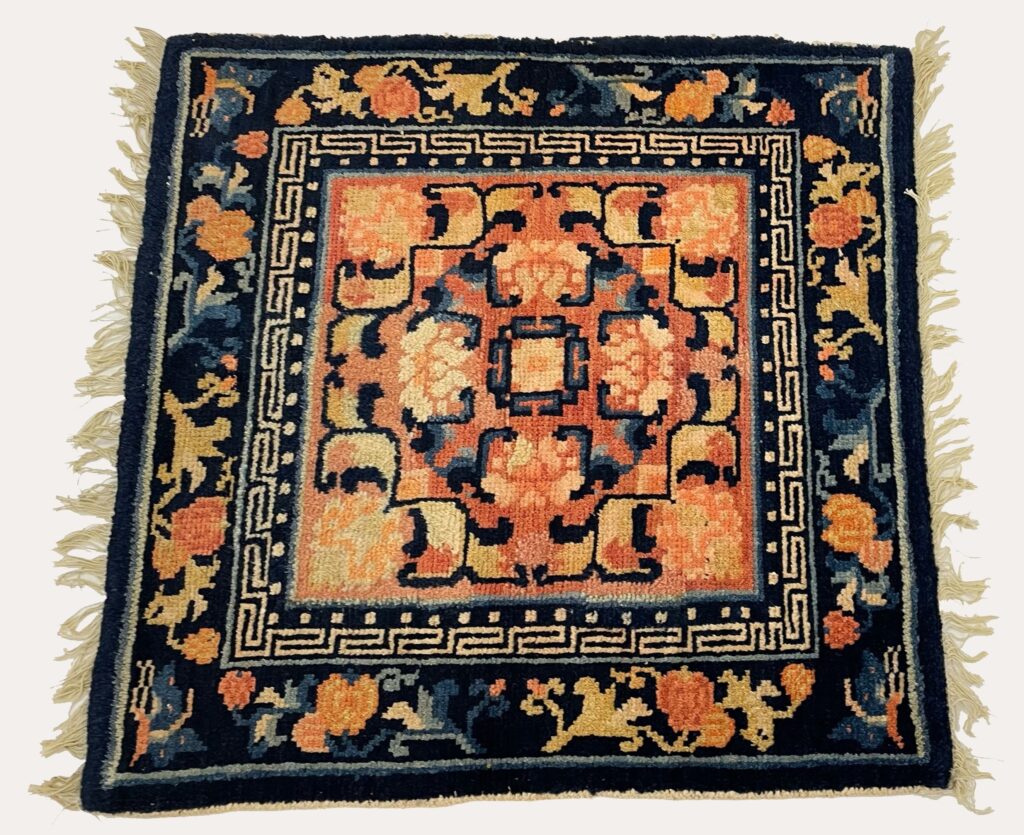
Saddle Rug
Tibet, 2011.04.E.47
In the center of the mat are lotus and pomegranate blossoms. The lotus is one of Buddhism’s most recognizable auspicious symbols since it represents purity of mind, immortality, and rebirth. The pomegranate blossoms represent lushness and fertility. The edges of the central square decoration are woven in a rectangular spiral pattern, which is a visual reference to the idea of “endless wealth.” Butterflies and fruits are represented along the edges of the mat. This artful mix of Buddhist, Tibetan, and Chinese auspicious signs shows the common theme of a wish for good fortune.
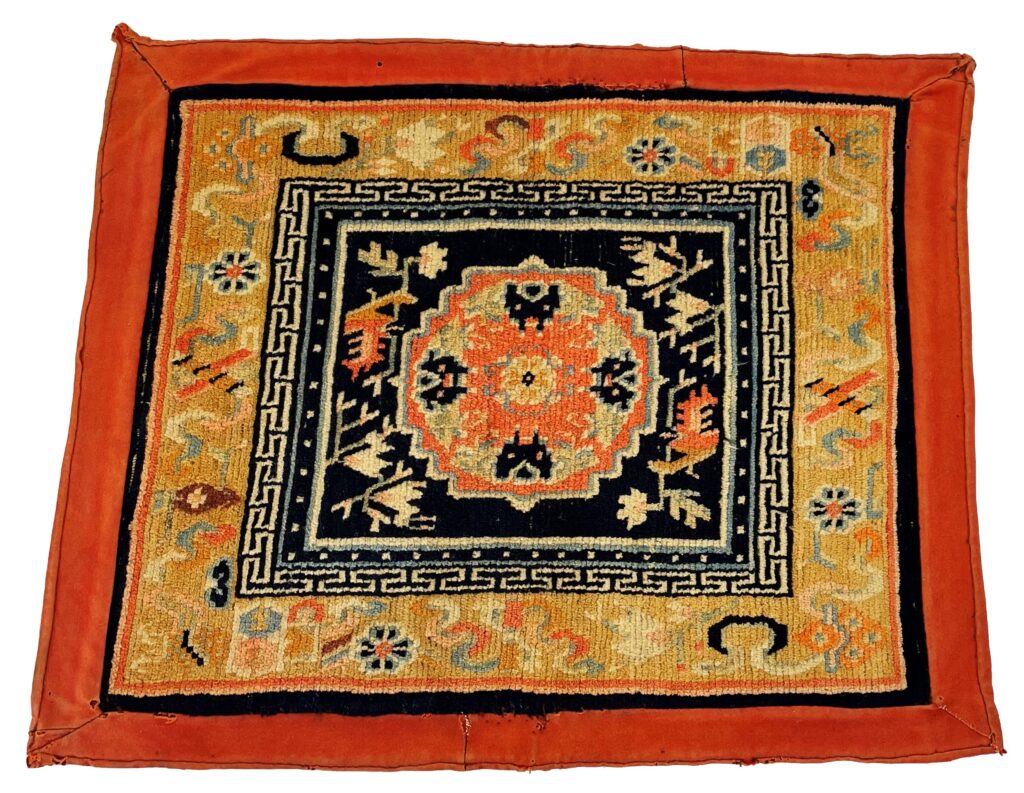
Saddle Rug
Tibet, 2011.04.E.12
Four butterflies surround a flower in the middle of this saddle rug. Around the butterflies are two lines of morning glory flowers. The morning glory flower is common on Tibetan rugs, meaning romantic love, harmonious family, and a wealthy life. Surrounding this decoration are two borders, the first a line of white pearls and the second border a meandering T-shape scroll. The outermost decoration combines Taoist and Buddhist iconography of silk, flutes, and orange scrolls indicating culture and education.
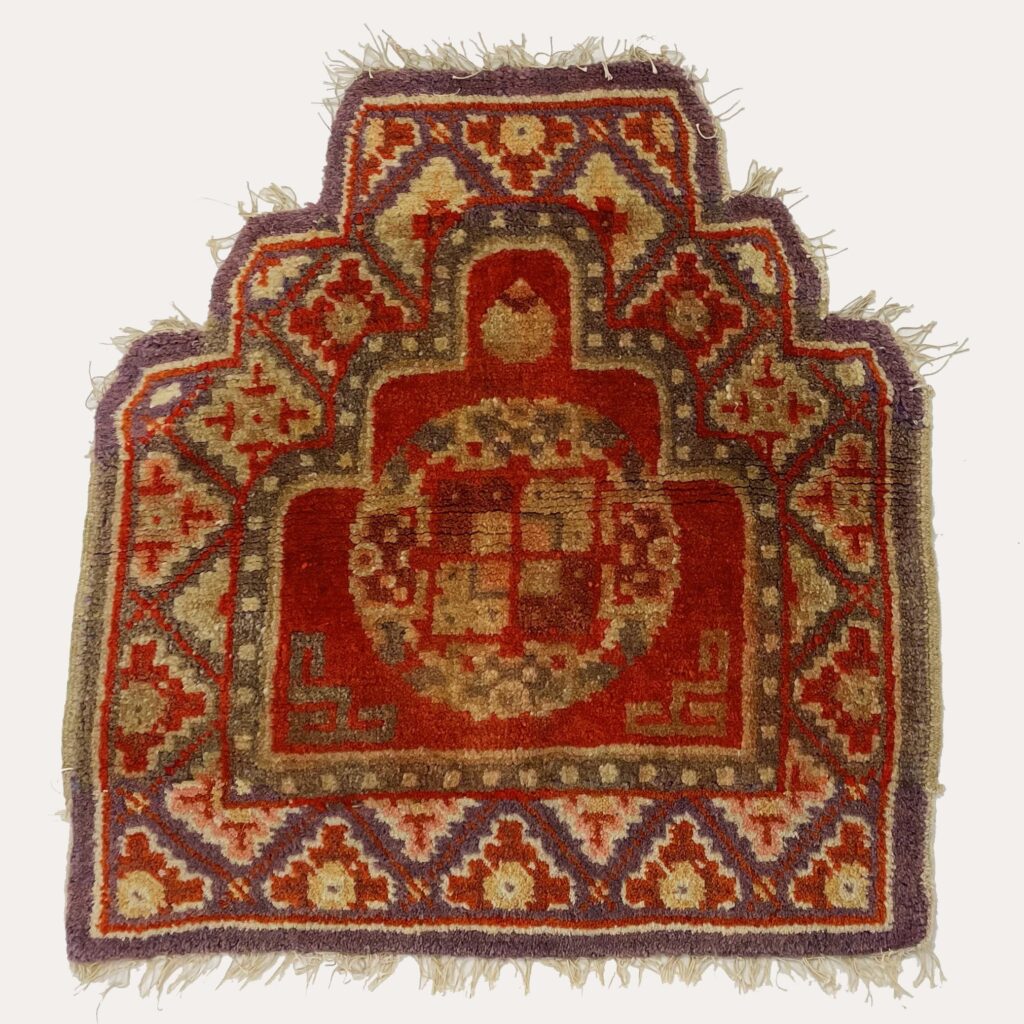
Saddle Rug
Tibet, 2011.04.E.66
This mat has the same shape as the central object of this exhibition. Small mats were often used as portable seats but would have not likely been used directly under a rider. Unlike the main textile, this mat does not have dragons and auspicious symbols but only geometric shapes, which indicates that this mat is not for monastic usage. Although it only has geometric and floral decorations, the red color of the mat may still indicate high social status.
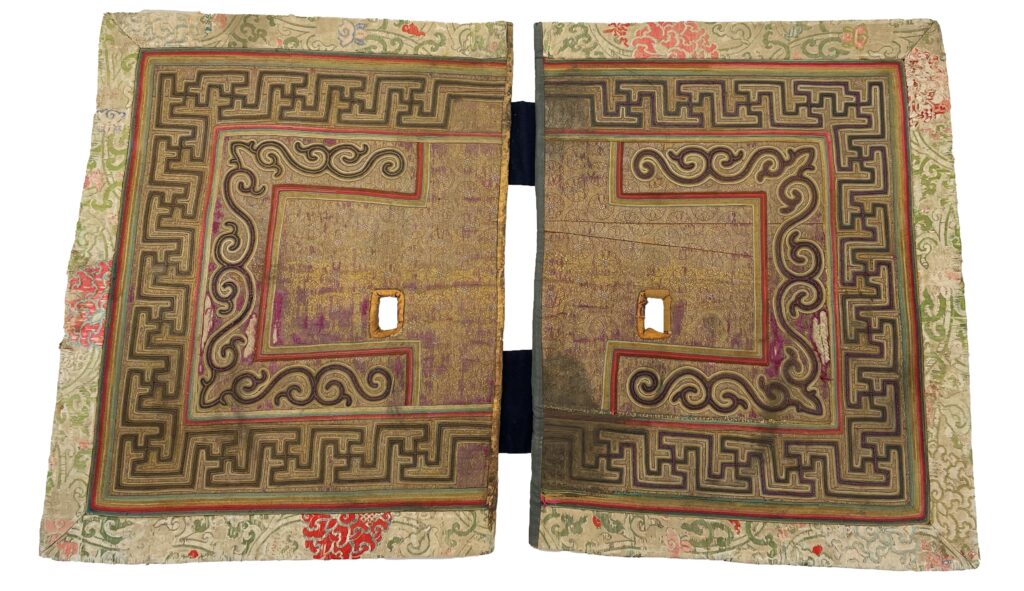
Saddle Rug
Tibet, 2011.04.E.74
Tibetan saddle rugs are usually made from wool, making this one very atypical. This saddle rug is the only one in the exhibit with different materials: cotton, leather, and metallic thread. The center of the saddle rug contains golden circular geometric patterns on the purple fabric. Each circle has flower iconography. The portion with a geometric pattern is surrounded by edges of scrolling designs that look like grapevines. The outermost edge of the saddle rug contains colorful peonies.
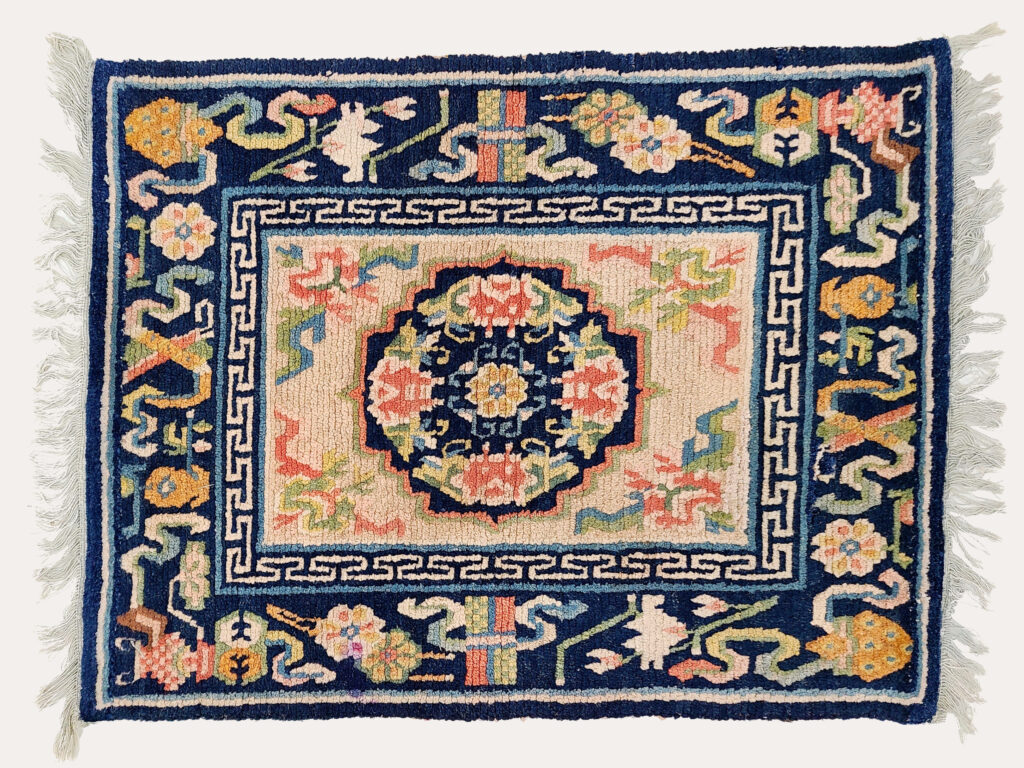
Saddle Rug
Tibet, 2011.04.E.48
The color of this saddle rug differs from most others in the exhibition since it does not have red, orange, and yellow as the dominant dye. Tibetan people use rug colors to classify a rug’s function and the owner’s socioeconomic status. In the 19th century, ordinary Tibetans could use rugs dyed blue, black, khaki, or beige for everyday use, while aristocrats usually used rugs dyed red, yellow, and apricot. Considering the colors of this mat, it is likely to be an ordinary saddle rug.

